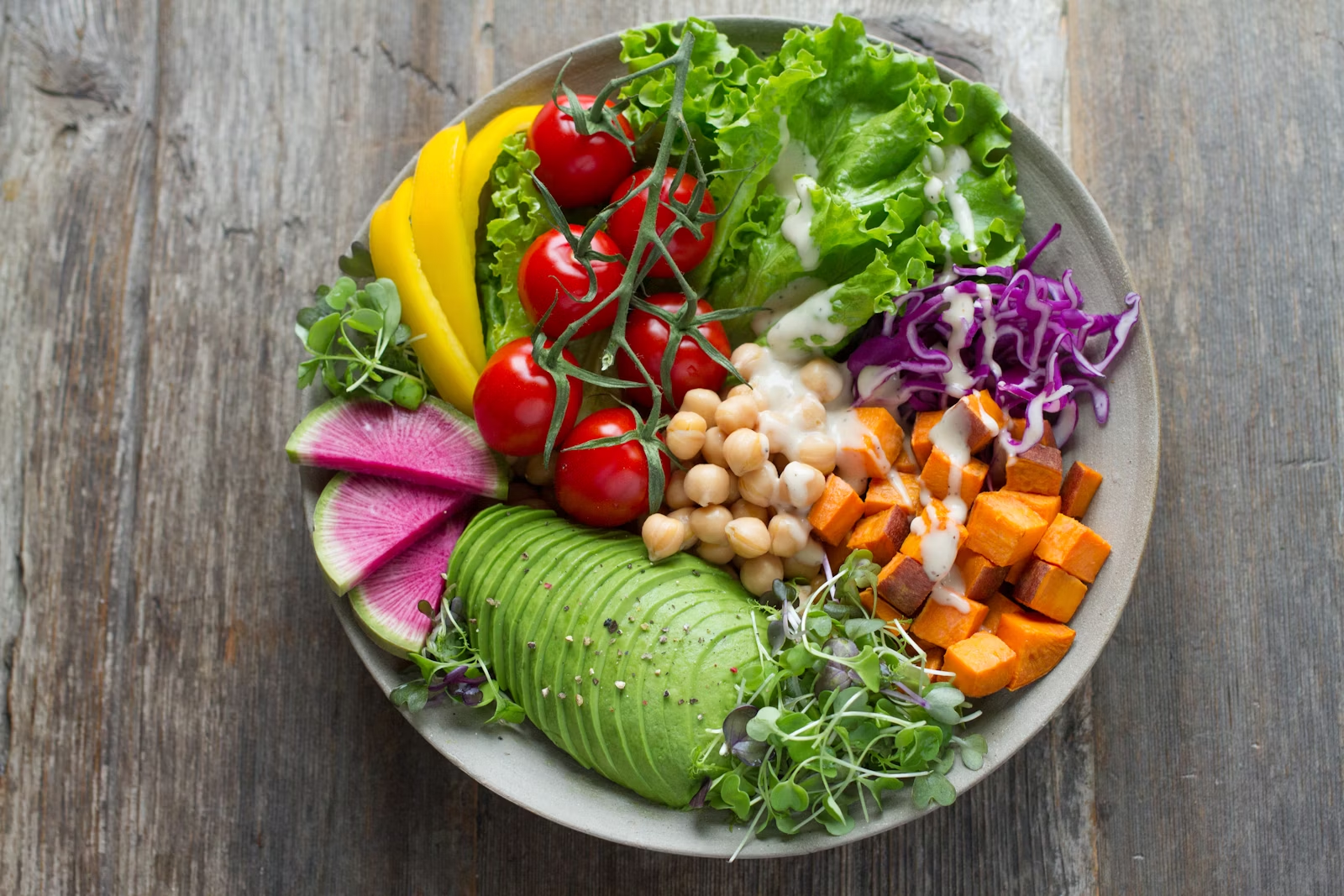
Vegetarian recipes can be simple, budget-aware, and seriously satisfying—especially when weight management is a goal. In this article you’ll learn how to build balanced plates with eggs and dairy (if you consume them), roasted vegetables, quinoa, and beans. We’ll keep things practical: short ingredient lists, easy cooking methods, and make-ahead strategies so weekday meals feel effortless. No “miracle” promises—just honest, tasty food choices and consistent habits that help you eat well at home or on the go.

Key concepts & benefits
Vegetarian eating can naturally raise fiber intake and reduce ultra-processed foods when we cook more whole ingredients. A practical benchmark: assembling a plate with half non-starchy vegetables, a quarter whole grains (like quinoa), and a quarter protein (beans or eggs/dairy) often improves satiety with fewer calories overall. That combination of fiber + protein slows digestion and helps you stay full longer—useful when trying to maintain or lose weight steadily without strict rules.
Further reading: NHS Eatwell Guide • Harvard Healthy Eating Plate.
Step-by-step guide
Step 1 — Stock a smart vegetarian pantry
- Proteins: beans, chickpeas, lentils, Greek yogurt, cottage cheese, eggs, tofu/tempeh.
- Whole grains: quinoa, brown rice, barley, oats, whole-wheat pasta.
- Healthy fats: olive oil, nut butters, tahini, seeds (chia, pumpkin, sesame).
- Flavor: garlic, onions, lemon, smoked paprika, curry, cumin, fresh herbs.
- Base sauces: tahini-lemon, yogurt-herb, mustard-vinaigrette, pesto.
Step 2 — Three core recipes (eggs/dairy option)
- Roasted quinoa & veggie tray
Toss bite-size vegetables (broccoli, peppers, zucchini) with olive oil, salt, pepper. Roast at 220 °C / 425 °F for 20–25 minutes. Fold into warm quinoa with lemon zest and parsley. Add crumbled feta or toasted seeds for protein. - Egg-and-beans breakfast hash
Sauté onions and peppers; add black beans, cumin, and a splash of salsa. Make two wells and crack in eggs. Cover until set. Serve with avocado and whole-grain toast. - High-protein yogurt bowl
Greek yogurt + oats + berries + a teaspoon of peanut butter. Optional drizzle of honey. Great as a quick lunch or post-workout snack.

Step 3 — Portions, protein, and satiety
- Quick portions: cooked legumes ~3/4 cup; eggs 1–2; Greek yogurt 3/4–1 cup; quinoa ~1/2 cup cooked.
- Smart combos: pair legumes with whole grains for complementary amino acids.
- Volume eating: stack non-starchy vegetables to naturally lower calorie density.
- Workout fuel: banana + yogurt; or oats + milk + chia for slow-release energy.
Step 4 — Weekly planning that saves money
- Cook legumes in batches and freeze in flat bags for quick thawing.
- Roast one or two sheet pans of roasted vegetables to anchor lunches and dinners.
- Keep two sauces ready (tahini-lemon and yogurt-herb) to rotate flavors.
- Alternate A/B menus weekly to avoid boredom while using the same staples.
Tips, common mistakes & fixes
- Mistake: skipping protein. Fix: include legumes, eggs, yogurt, or tofu in 1–2 meals daily.
- Mistake: heavy pours of oil and creamy sauces. Fix: measure fats (1–2 tbsp per meal) and lean on spices and acids for flavor.
- Mistake: not enough vegetable variety. Fix: aim for a “color rainbow” across the week.
- Tip: lemon or vinegar brightens flavor with almost no calories.
- Tip: smoked paprika, cumin, and curry turn the same beans into new meals.
Tools & recommended resources

- Instant Pot/pressure cooker: speeds up legumes and grains.
- Non-stick sheet pans: crisp roasted vegetables without excess oil.
- Trusted resources: USDA MyPlate; Harvard—Healthy Weight.
- From our site: MonetizeWorks Blog • Contact • Privacy Policy.
FAQ
Can vegetarian recipes really help with weight loss?
They can support weight management when meals emphasize whole foods, fiber, and adequate protein. Filling bowls built from beans, eggs/dairy, and vegetables often curb snacking because they digest more slowly. Focus on consistent habits—planned shopping, weekend prep, and portion awareness—rather than strict rules. If you balance plates and keep calorie-dense extras (oils, cheese, sweets) measured, vegetarian meals can be both satisfying and aligned with your goals.
How do I get enough protein without meat?
Combine legumes (beans, lentils, chickpeas), eggs, dairy (Greek yogurt, cottage cheese), and soy foods (tofu/tempeh). Distribute protein across 2–3 meals to support satiety. Mixing legumes with whole grains like quinoa or brown rice gives a strong amino-acid profile over the day. If you train intensely or have unique needs, speak with a qualified professional about tailoring targets and, if necessary, supplementation.
Is quinoa better than rice for vegetarian meals?
Both can fit. Quinoa cooks quickly and brings more protein per serving, which helps with fullness, but brown rice is budget-friendly and versatile. Rotate them—or mix cooked quinoa into brown rice—to change textures and balance cost with nutrition. The bigger picture is the full plate: include plenty of vegetables and a reliable protein source to keep meals satisfying.
What if I don’t eat eggs or dairy?
No problem—lean on beans, lentils, chickpeas, soy yogurt, tofu/tempeh, and seeds. Make sauces from tahini or blended beans for creaminess. For breakfast, try overnight oats with soy milk and chia; for lunch, roasted-veggie quinoa bowls with tofu; for dinner, lentil chili or chickpea curry. You’ll still hit fiber and protein targets by planning portions and keeping meals varied through herbs, spices, and weekly prep.
Conclusion
Vegetarian recipes shine when you combine simple cooking with weekly planning. Keep core staples on hand, roast vegetables in batches, and build plates around legumes, quinoa or other whole grains, and—if you enjoy them—eggs and dairy. Consistency turns small choices into lasting results. Want more practical guides? Join our newsletter and get a printable vegetarian meal-prep checklist to start next week strong.
Explore more on the blog and reach out via /contact. Read our Privacy Policy.
Helpful links: USDA MyPlate • Harvard Nutrition Source